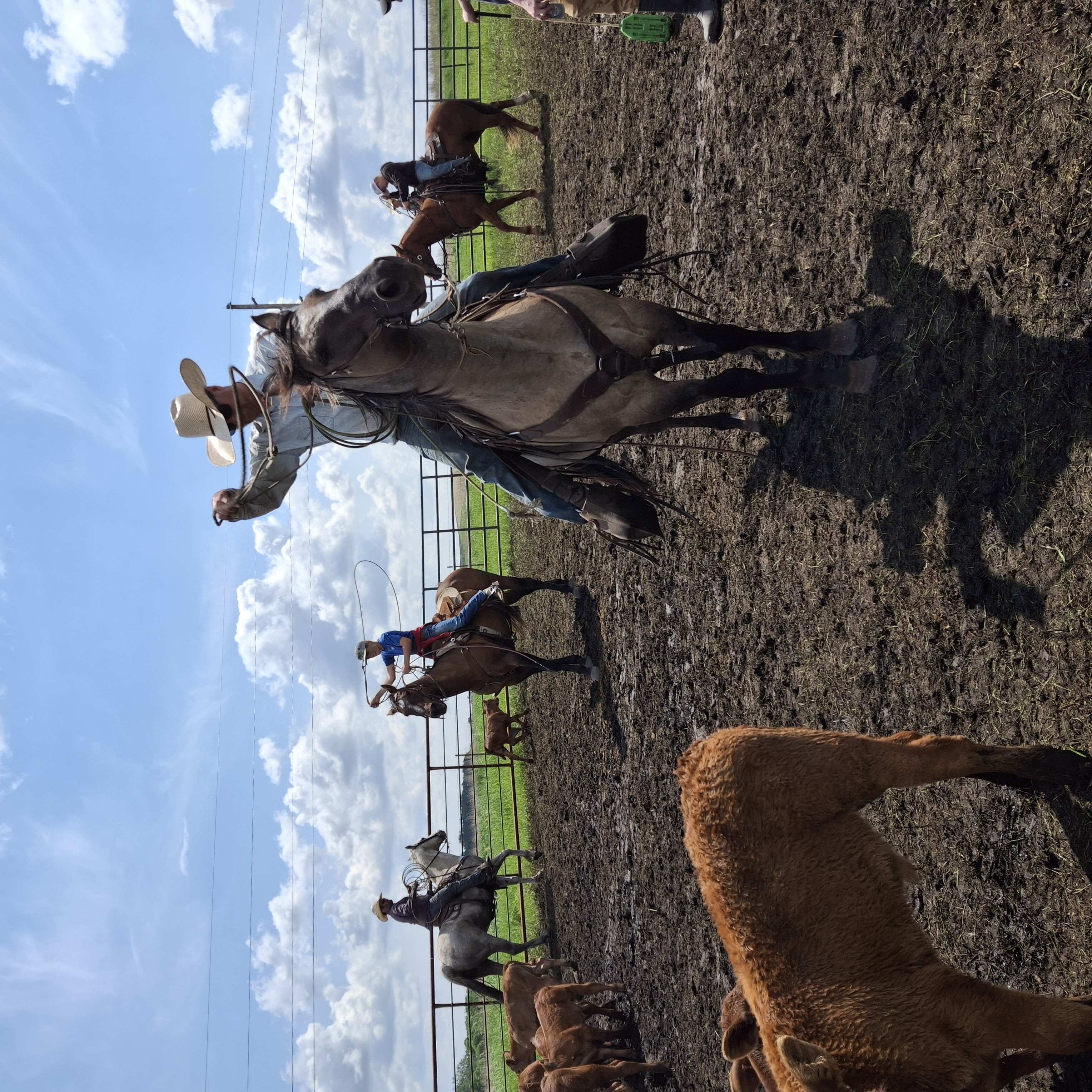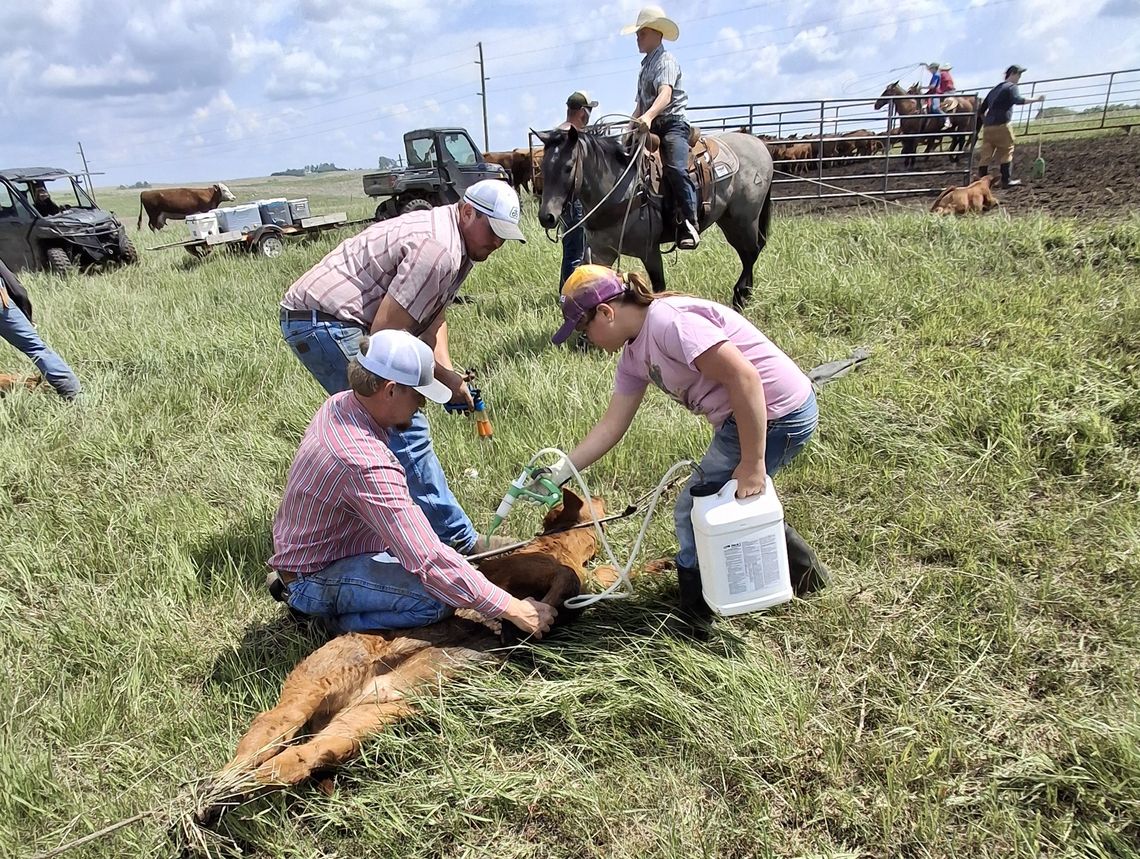
Part 1
In agriculture—like in most industries today—there’s a constant push to modernize. Equipment is getting bigger, technology is taking the lead, and many tasks have become surprisingly hands-off. But here in northeast South Dakota, some cattlemen and ranchers are bucking that trend in a notable way. Each spring, instead of relying on “new-fangled” technology, they’re working their calves the old-fashioned way: with a crew of cowboys and cowgirls, plenty of ropes, and a whole lot of muscle, fun, and fellowship.
The event is called a branding—whether or not calves are actually branded. Held in the spring, the purpose is to “doctor” the herd, tending to both cows and their new calves. Depending on the operation, a branding might take place just a few weeks after calving or a few months down the line.
A lot gets done in a short amount of time. Tyler Hellwig, a rancher from the Sisseton area, walks through the process. First, a big crew of willing helpers is gathered—many of them on horseback. The team rides out to gather the cows and calves from their pasture, driving them into a corral that has been set up beforehand. Once penned, the cows and calves are separated, and the cows are vaccinated. Then the real action begins with the calves.
Riders rope the calves by their hind legs and drag them out of the pen to the waiting ground crew. There, the crew moves quickly—vaccinating, castrating, and in some cases, branding the calves.
Hellwig explains that the vaccinations help prevent common stomach and respiratory illnesses and jumpstart the calves’ immune systems. Such vaccinations are very quickly administered by the crew with a few quick pokes.
Castration is another key step in the process. Courtney Schaefer, a sixth-generation cattle rancher near Sisseton, explains that bull calves are castrated to keep steers more docile and their meat more tender. “We want the best beef product going to market as possible,” she says. Castration can be done using the banding method or surgically with a scalpel, depending on the rancher’s preference.
Some ranchers also choose to brand their calves. Brands are registered through the South Dakota Brand Board and must be placed in a specific location on the animal, according to regulations. Though branding is more prevalent West River, many still rely on it to designate their animals.
Executing all of this takes more than just manpower—it requires skill, timing, and teamwork. Most local crews have been part of many brandings over the years, and the rhythm of the work becomes second nature. Nate Bien, a rancher with agriculture in his blood from the Veblen area, says a solid crew is essential. “There are jobs for everyone,” he notes. “You’ve got ropers, gatemen, vaccinators, forkmen, castrators—it all comes together like a well-oiled machine.”
Sam Nordquist, a third-generation cattle producer from Lake City, said that depending on how many cow/calf pairs you have, at least 20 people in the crew is a good goal. Luke Nordquist added, “With a big crew like that you have all bases and positions covered. You have maximum efficiency. It’s fairly common with a full crew to work three to four hundred cow/calf pairs in four hours or less this way.”
One handy tool that makes the process safer and more efficient is the Nord Fork—a device placed behind a calf’s head to hold it steady while the ground crew works. A rider ropes the calf’s hind legs and drags it past the crew, who quickly slip the fork into place. The fork secures the front end while the rider holds the heels. Once finished, both are released. This method avoids the need to rope the calf’s head or front legs. After the animal is doctored, it quickly scampers off to find its mom.
Besides forks and several willing cowboys and cowgirls, another vital piece of equipment is a reliable horse. Most riders are mounted on American Quarter Horses. Whether it’s men, women, or kids in the saddle, all on horseback need to be confident riders—and if you’re on roping duty, skilled with a rope as well.
Schaefer explains that roping is typically learned hands-on, often during brandings themselves. “The older generation teaches the younger whenever possible,” she says. “A lot of people are willing to dedicate that time to teach the kids even as everything is going on. These are traditional western values in action.”
Part 2 of this story will appear next week, highlighting how branding compares to other methods of working calves, the benefits and risks of each approach, and the camaraderie and memorable moments shared by the crew.



